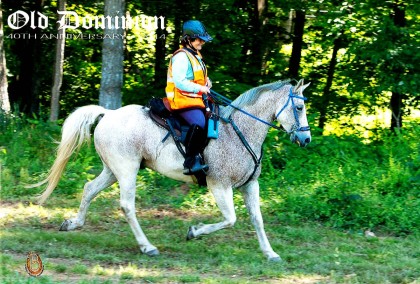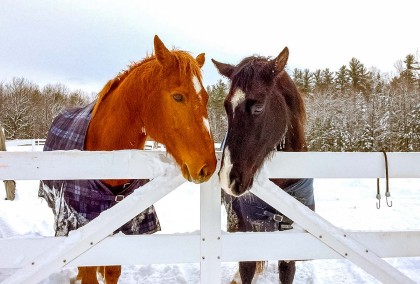Insulin Dysregulation
Insulin dysregulation [ID] is a term coined in a 20131 publication to describe horses with abnormal levels of insulin. Elevated insulin used to be considered to mean that a horse is insulin resistant; in many cases it still does, but there is emerging information there can be other mechanisms behind an elevated insulin.
"Insulin resistance" (IR) means the insulin-responsive cells (muscle, fat, liver) do not respond normally to stimulation by insulin. As a result, the pancreas puts out higher levels of insulin until the glucose blood levels normalize. This is one explanation for why blood insulin levels would be higher than normal.
The level of insulin in a horse's blood is a function of both how much is being secreted by the pancreas and the rate at which the liver, kidney and muscle clear it from the blood. There is some evidence to suggest there may be decreased clearance of insulin in horses with high insulin levels. However, abnormal clearance as a primary cause contributing to high insulin blood levels has not been definitively proven.
In horses that are insulin resistant, failure of the muscle and fat to respond appropriately to usual levels of insulin stimulates the pancreas to keep putting out insulin in higher amounts until blood sugar levels normalize. However, the pancreas reacts to other things besides blood glucose levels.
When the horse eats, hormones called incretins are released into the blood by the intestinal tract. Two of these incretins, GLP-1 and GIP, cause release of insulin from the pancreas. It has been found that some ponies that test negative for insulin resistance with intravenous testing will have positive tests for hyperinsulinemia (high blood insulin) after being challenged orally with grain or dextrose. The abnormally high insulins after feeding have been linked to higher levels of active GLP-1 incretin. On the other hand, a similar study in full-size horses with EMS (equine metabolic syndrome) did not find any significant connection between higher active GLP-1 and high insulins.
Because high blood insulin after eating or oral dextrose dosing does not necessarily mean the animal will test positive for insulin resistance by intravenous testing, the term "insulin dysregulation" was suggested to describe all horses with hyperinsulinemia, regardless of the cause(s).
The use of the term "dysregulation" implies there is something abnormal going on, but that may not be the case. A 2016 study by de Laat, et al.,2 found that the non-IR ponies with high insulins on oral testing were also absorbing increased amounts of glucose. In that scenario, the higher levels of GLP-1 and insulin could be considered an appropriate response to the higher glucose, not "dysregulation". The dysregulation in that case involves glucose absorption, not the reaction to it.
Similarly, if reduced insulin clearance is proven in horses with high blood insulins, it is not necessarily a "dysregulation". There may simply be a limit to how fast insulin clearance can occur. Alternatively, it may be entirely normal for insulin clearance to slow down when there is a situation of high glucose.
To put it another way, if insulin levels were truly being abnormally regulated it would show up in the blood glucose. Too much insulin would cause low blood sugar and too little would result in high levels. We don't see that.
It's important to understand that having high insulin may not necessarily always mean there is insulin resistance, if only so that you do not become confused by seeing the term "insulin dysregulation". However, the bottom line for the horse is the same. High insulin is a risk factor for laminitis and the best way to combat it is with an appropriate diet and plenty of exercise – regardless of what is causing it.
Information Contained On This Page Adapted From
Equine Cushing's & Insulin Resistance Course
Offered by Eleanor M. Kellon, VMD www.drkellon.com
Frank N, Tadros EM, Insulin dysregulation, Equine Vet J, 2014 Jan;46(1):103-12. doi: 10.1111/evj.12169. Epub 2013 Nov 18.
de Laat MA, van Haeften JJ, Sillence MN, The Effect of Oral and Intravenous Dextrose on C-peptide Secretion in Ponies. J Anim Sci, 2016, Feb;94(2):574-80, doi: 10.2527/jas.2015-9817.



